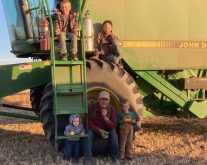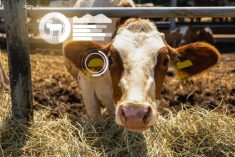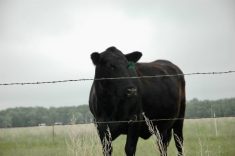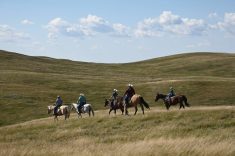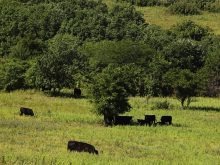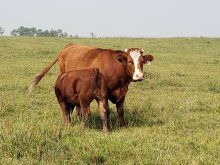Have you ever wondered where your money goes during the winter feeding period?
Feed costs are easy to spot in a beef cattle operation, but what about the other expenses quietly chipping away at your bottom line? This is where yardage comes in; it’s a crucial part of managing winter feeding costs in cow-calf operations.
What is yardage?
Read Also
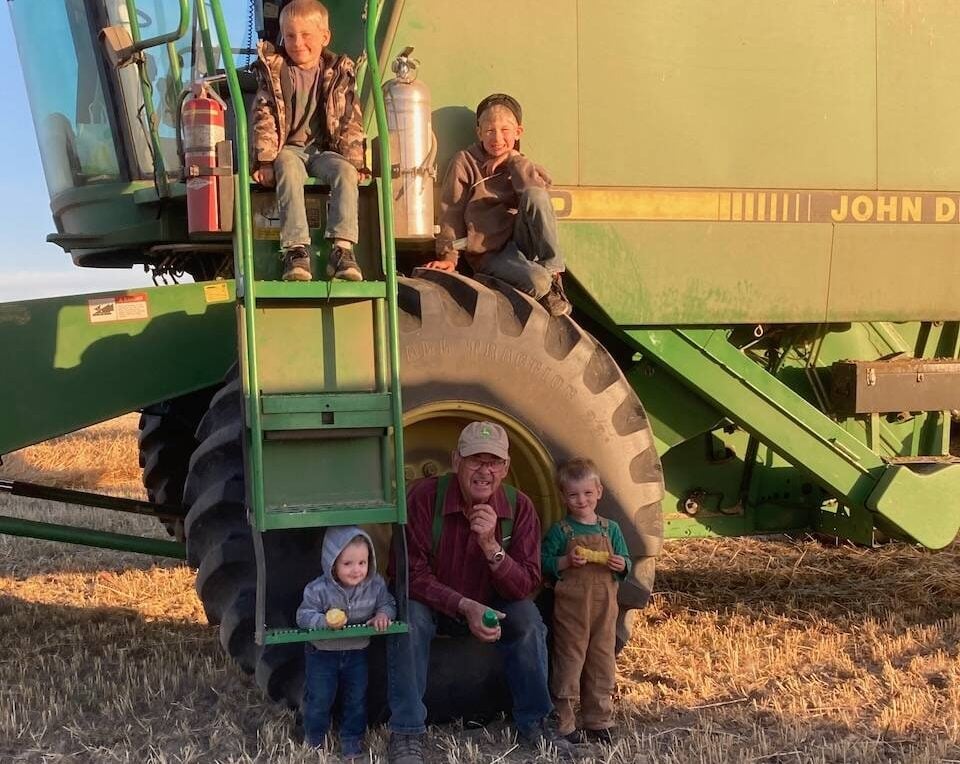
Harvest wraps up and fall work begins
At the Eppich famly ranch in western Saskatchewan, the fall harvest was successful with few breakdowns, cows and calves have been sorted and a new tractor has arrived
Yardage refers to the overhead and non-feed costs incurred while maintaining cattle during the winter feeding period. These costs include day-to-day expenses such as labour, equipment and building maintenance, fuel, utilities, manure handling and other general expenses such as farm taxes and accounting fees. They also include non-cash costs, such as machinery and facility depreciation, which represent the graduate loss of value in assets over time.
Yardage is typically expressed on a per-head per-day basis.

Why does yardage matter?
Yardage may not grab attention like feed costs, but it significantly impacts profitability. These costs, especially non-cash costs like depreciation, often remain unnoticed but can erode profitability over time. For example, underestimating yardage may lead a beef producer to assume their operation is more efficient than it truly is. Ignoring yardage also makes it difficult to identify areas where costs can be optimized. For example, the exclusion of machinery maintenance and repair costs may make the cow-calf enterprise look more profitable than it is.
Yardage insights can mean better decisions
Yardage is more than just a line on a spreadsheet — it’s a key component to understanding and controlling costs, and can be a powerful tool for improving financial outcomes. Here are some examples:
Pinpoint cost driver: Identify the most significant contributors to yardage and pinpoint opportunities for savings.
Evaluate resource utilization: Determine if equipment and facilities are underutilized or can be used for other farm tasks.
Explore alternatives: Yardage insights can highlight opportunities to lower non-feed costs through alternative feeding methods.
Assess economies of scale: Knowing yardage costs can help assess whether expanding the herd could lower costs per head. Overhead costs are often considered fixed, because they don’t change significantly with the size of the herd — up to a point. This means increasing the herd size can spread these costs over more animals, reducing the per-unit expense and improving cost efficiency. However, as the herd grows beyond the capacity of existing resources, additional expenses for equipment or labour may arise.

Keeping track of yardage
Accurate yardage calculations start with diligent record-keeping. Keep detailed records of cash expenses, such as utility bills, equipment maintenance costs and labour hours.
Many overhead costs are incurred at the whole-farm level, making it necessary to allocate these costs across different enterprises and production stages to calculate yardage accurately.
—> READ MORE: Rethinking yardage costs by Sean McGrath
Overhead costs include machinery maintenance and repairs, building repairs, utilities, insurance, property taxes and salaries.
For farms with multiple enterprises (say, cash crops and cattle), allocating whole-farm costs to the cow-calf winter feeding period can be complex but essential. Various methods can be used for this allocation:
Time-based allocation: For assets like machinery or facilities, costs can be divided based on the proportion of time these resources are used for winter feeding.
Revenue-based allocation: It can be difficult to track or estimate the use-time of each fixed asset used on a diversified farm. In this case, costs can be divided based on the cow-calf enterprise’s share of total farm revenue. For instance, if the cow-calf enterprise generates $40,000 in revenue and the crop enterprise generates $60,000, the total farm revenue is $100,000. The cow-calf enterprise’s share is 40 per cent, so 40 per cent of overhead costs would be allocated to it.
Alternative methods: Costs can also be allocated using the percentage of gross margin or total expenses contributed by each enterprise. For example, if the cow-calf enterprise incurs 45 per cent of the total farm expenses, 45 per cent of the overhead costs would be allocated to it.


The BCRC cow-calf yardage calculator
The Cow-Calf Yardage Calculator is designed to help producers estimate their yardage by providing a clear template and streamlining the calculation process. It requires data input on herd size, winter feeding days, whole-farm cash overhead costs and the values of machinery and buildings allocated to the cow-calf winter feeding period. This tool calculates the total yardage cost, including a breakdown of cash expenses and depreciation on machinery and buildings.
In this calculator, non-feed variable costs — such as veterinarian services, medicine and bedding — are treated separately from yardage. However, they can be entered in a supplementary section to calculate the combined total of yardage, bedding and veterinary and medicine costs.
Making other yardage-related calculations
While yardage is commonly expressed on a per-head per-day basis, the calculator also provides results in cost per animal unit day (AUD) when animal weights are entered. Production cost and feeding capacity can vary significantly with animal size. Yardage on a per-AUD basis helps allocate overhead cost or shared resources based on cattle size or type.
This approach is useful when calculating profits, as both costs and revenue can vary with cattle size and type. For example, a larger 1,500-lb. cow may have a higher yardage cost but could also wean a heavier calf compared to a smaller 1,300-lb. cow. Calculating yardage per AUD also provides a standardized measure for comparing costs across farms with different herd compositions or within the same farm as herd composition or cattle sizes shift over time.
Bottom line
Understanding yardage is vital for identifying inefficiencies, managing resources and improving profitability. By tracking yardage, producers can better navigate challenges and create opportunities for growth.



